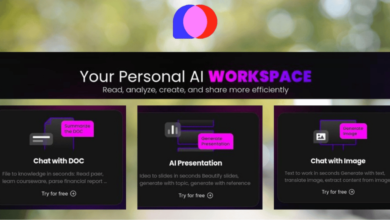Understanding the role of a pricing tool in e-commerce

For online stores managing a large product portfolio, setting the right prices is both an art and a science. A pricing tool is an advanced software solution designed to simplify and optimize the process of determining product prices. By leveraging the power of technology, especially artificial intelligence (AI), pricing tools have transformed how online retailers approach retail pricing strategies.
Pricing is one of the most critical factors influencing customer decisions. However, manually setting prices for thousands of products is time-consuming and prone to error. This is where pricing tools shine—they automate complex processes, save time, and ultimately increase profitability.
What is dynamic pricing?
One of the most impactful features of modern pricing tools is their ability to implement dynamic pricing. This method allows online stores to adjust prices in real-time based on factors like competitor pricing, market demand, inventory levels, and even customer behavior.
Imagine running an online store that sells hundreds—or even thousands—of items across multiple categories. Without a dynamic approach, setting a competitive yet profitable price for each product becomes nearly impossible. Dynamic pricing solves this by analyzing key variables and providing intelligent recommendations or even automatically adjusting prices.
AI-powered algorithms play a vital role in dynamic pricing. These algorithms process vast amounts of data from competitors’ websites, historical sales trends, and real-time market conditions. The result? A pricing strategy tailored to maximize sales and profitability while staying competitive in an ever-changing market.
An example of dynamic pricing in practice
To understand how dynamic pricing works in the real world, consider an online electronics store selling popular gadgets like wireless earbuds. These earbuds are also sold by several competitors, and their prices frequently fluctuate. Without a pricing tool, the store manager would need to manually track competitors’ prices and decide when to adjust their own, a time-consuming and error-prone process.
With a pricing tool, the process becomes seamless. The software continuously monitors the prices of the earbuds on competitors’ websites. For instance, if a competitor drops their price by 10%, the tool quickly identifies the change and suggests a new price that aligns with the retailer’s strategy—whether it’s matching the competitor’s price or undercutting it slightly to attract more customers.
At the same time, the pricing tool factors in the store’s current inventory and profitability goals. If the earbuds are overstocked, the software might suggest a more aggressive price reduction to clear inventory. Conversely, if the stock is running low, the tool may recommend maintaining a higher price point to maximize profit on the remaining units.
Dynamic pricing tools also account for external factors, such as seasonal demand spikes. If the holiday season is approaching and demand for gadgets increases, the pricing tool might recommend raising prices to capitalize on the increased interest. These adjustments happen in real-time, ensuring that the store remains competitive while maximizing its revenue.
This example illustrates how dynamic pricing empowers online stores to make smarter, data-driven decisions that would be impossible to achieve manually. By automating the pricing process, retailers can adapt to market changes instantly, giving them a significant edge in the competitive e-commerce landscape.
How pricing tools work
At the heart of every pricing tool is its ability to scan, analyze, and recommend. These tools are built to pull in data from various sources, including:
- Competitor websites to track price fluctuations.
- Internal sales data to understand what works best for your audience.
- Market trends that predict demand shifts.
This data forms the foundation for actionable insights. By scanning competitors’ prices, the software identifies opportunities to set prices that either match or beat the competition. For instance, if a competitor lowers the price of a particular item, the tool can instantly suggest a new price point to maintain competitiveness without sacrificing profit margins.
Additionally, pricing tools consider more than just external factors. They analyze internal metrics, like inventory levels, to ensure that high-stock products are competitively priced to encourage sales. Conversely, for products in limited supply, the tool might suggest a higher price to maximize revenue.
Why pricing tools are essential for large product portfolios
For e-commerce stores with extensive product catalogs, the challenge isn’t just about setting prices—it’s about doing so efficiently across thousands of SKUs. Pricing tools excel in this scenario because they automate the repetitive and complex task of pricing. With a single platform, store owners or managers can gain an overview of pricing across their entire portfolio and make adjustments in a fraction of the time it would take manually.
Another advantage is the ability to maintain consistency. Without a tool, it’s easy for pricing inconsistencies to creep in, which can confuse customers and harm the store’s reputation. With automated solutions, prices are managed systematically, ensuring accuracy and consistency.
AI’s impact on retail pricing
AI has revolutionized the world of retail pricing. Its ability to process and analyze vast amounts of data at incredible speeds is unmatched by traditional methods. AI-driven pricing tools don’t just suggest prices—they learn from data to make smarter decisions over time. This is particularly valuable in dynamic pricing, where even minor changes can significantly affect sales and profits.
For example, AI algorithms can identify patterns that might not be immediately obvious, such as seasonal trends or shifts in customer preferences. By leveraging this insight, pricing tools can help e-commerce stores stay ahead of the curve, always offering prices that align with current market conditions.
Another key advantage of AI is its ability to segment customers. Instead of applying blanket pricing strategies, AI-powered tools can suggest personalized pricing based on customer behavior, location, and purchase history. While not every e-commerce store uses this feature, it showcases the potential of AI in shaping the future of retail pricing.
Staying competitive in a dynamic market
E-commerce is fiercely competitive, with customers often comparing prices across multiple platforms before making a purchase. In this environment, having a pricing tool that incorporates dynamic pricing is no longer a luxury—it’s a necessity.
One way these tools help retailers stay competitive is by enabling real-time price monitoring. Competitor prices can change multiple times a day, and manually keeping up with these shifts is impractical. Pricing tools continuously scan for changes and provide instant recommendations to ensure your store remains competitive.
Moreover, dynamic pricing isn’t just about being the cheapest. It’s about finding the optimal balance between attracting customers and maintaining healthy profit margins. Pricing tools help retailers identify this sweet spot, ensuring they don’t undervalue their products while staying appealing to customers.
The future of retail pricing
As technology continues to evolve, so does the potential of pricing tools. The integration of AI and machine learning means that these tools will only become more intelligent and efficient. Features like predictive analytics, which anticipate market trends before they happen, are already making their way into many pricing platforms.
Retailers adopting these advanced tools early are positioning themselves for long-term success. As the e-commerce landscape becomes increasingly competitive, having a robust and adaptive pricing strategy will be crucial for standing out. By embracing dynamic pricing and leveraging the full capabilities of AI-powered pricing tools, online stores can navigate the complexities of retail pricing with ease.




